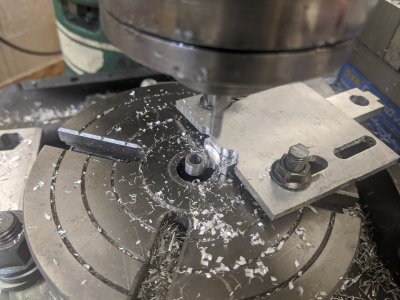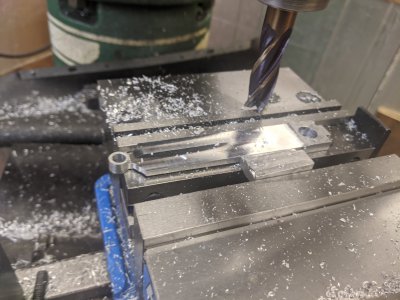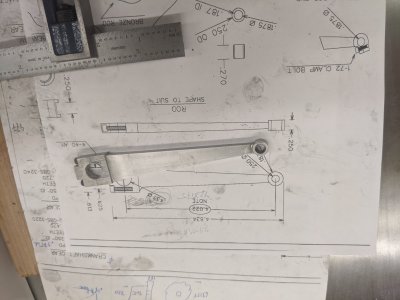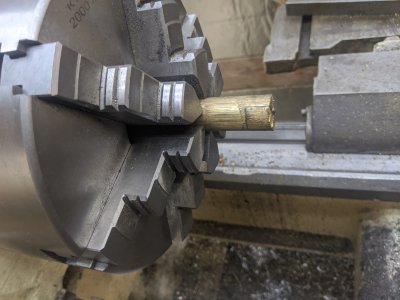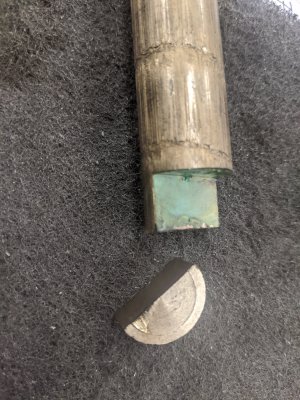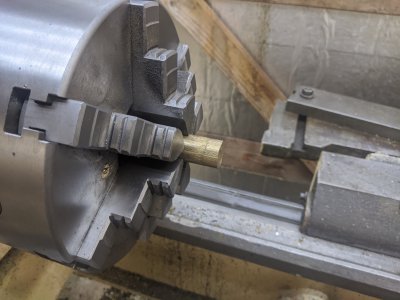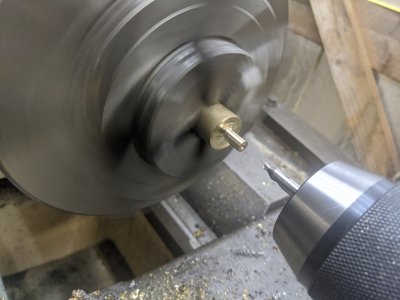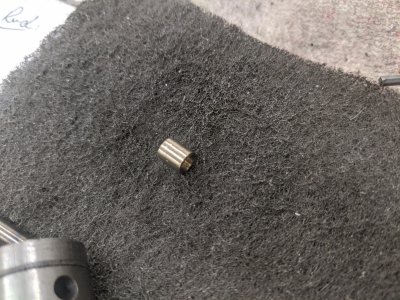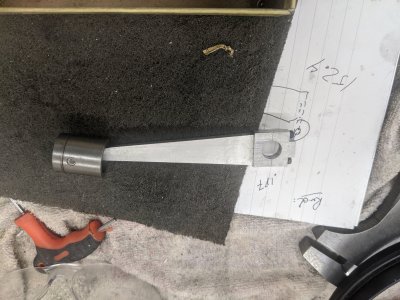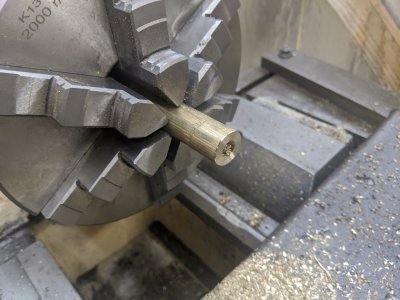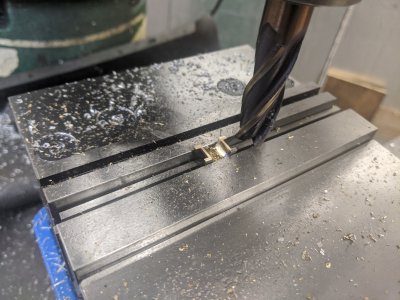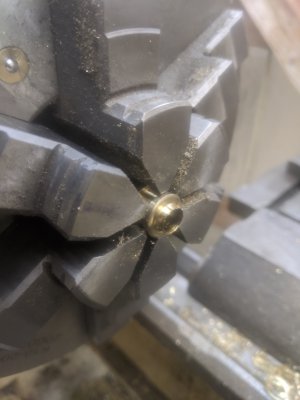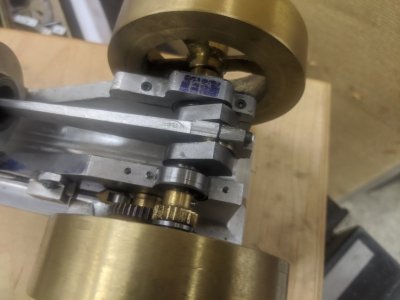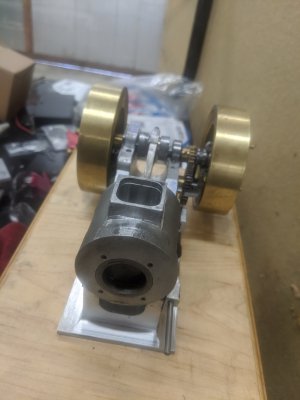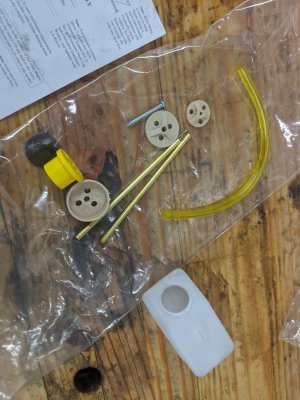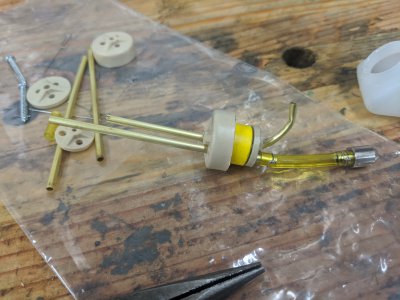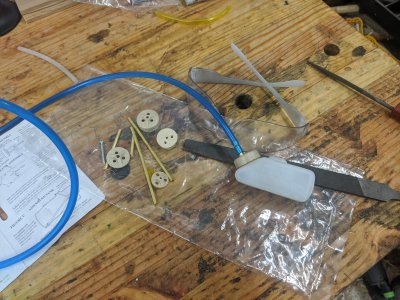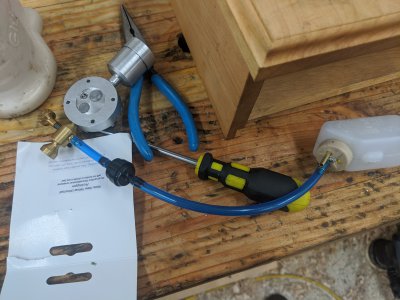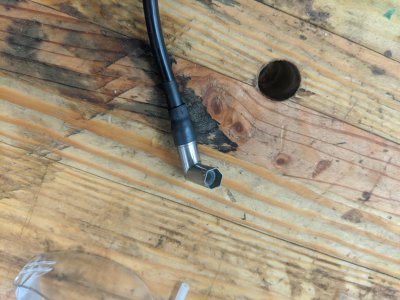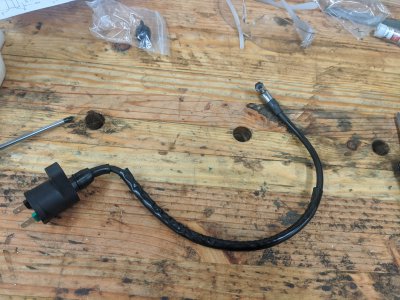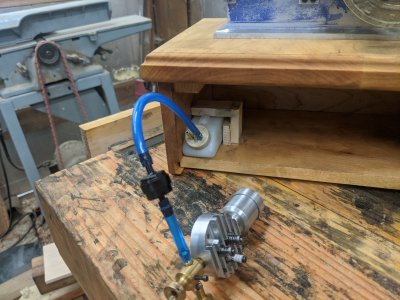Part 41: Starting the connecting rod!
So, I had a few hours today, so I decided to start on the last assembly: The connecting rod & bushings. I opted to make it out of aluminum, though I DID consider brass. While Brass would be cool, I wasn't sure it would be durable enough. I ended up buying both materials so I can do it over if it needs it

I suspect this will take a few days of effort, but this is part 1!
First, I used the horizontal bandsaw to cut the main bar and the bearing cap. I'd already measured the length I needed, since the plans (despite having dimensions) say to measure, and not trust the length dimensions.
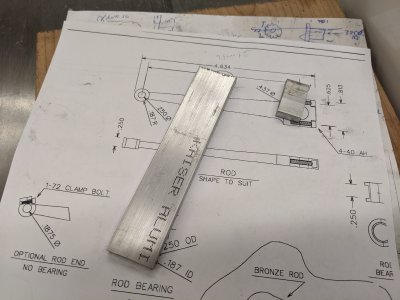
Next, I squared off both sides of the main connecting rod bar.
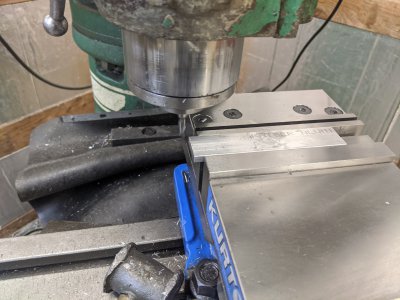
THEN, I did the same with the cap.
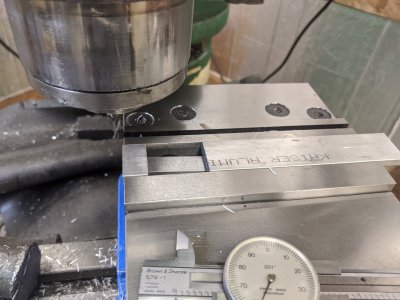
This setup was odd, but seemed to work. I spotted, drilled, and tapped the main bar for 4-40. I ended up screwing up the center on the X axis, but I made up for it later.
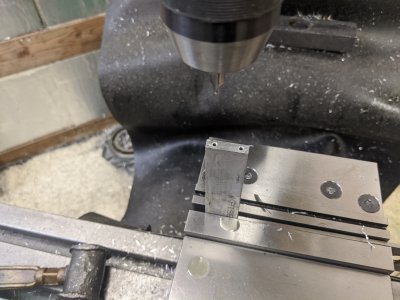
The cap required a bit of shaping, so I clearance drilled, then used a mill to clear out the spot for the heads of the bolts.
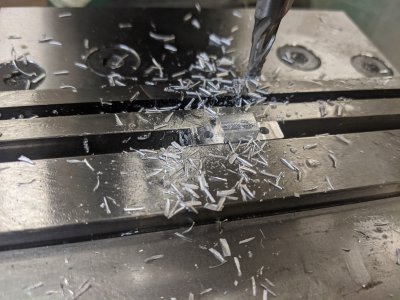
I connected the two (I actually shortened a pair of bolts on the grinder, since the ones I had weren't short enough!) and discovered I was off-center for the bolt holes about 10 thou on the connecting rod. I used the DRO, but I must have messed something up with edge finder. I took it down to the edge of the bolt heads on both sides, so it should just be roughly symmetrical now.
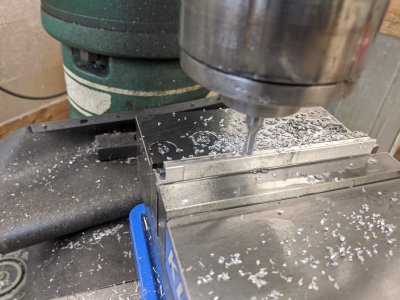
Next, I needed to drill the holes. The crankshaft side needs to be at the gap so I used a wiggler to find that point. I used the edge finder +DRO to find the center of the Y axis.
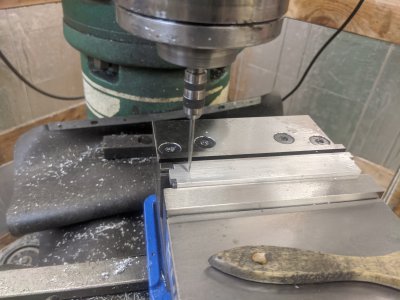
I drilled the big hole (since I didn't have a matching reamer), but I reamed the piston side. I need to make a bushing anyway, so this was probably a waste of using the reamer. But *oh well!*.
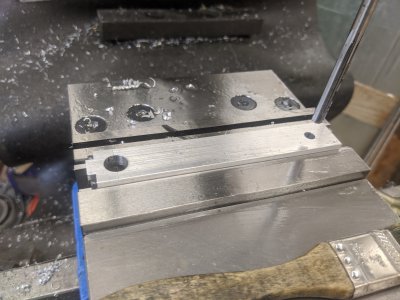
Now that I have the 'functional' parts of the connecting rod complete, I need to do the shaping of it, first so it fits in the cylinder, and second so it looks nice! I popped my small rotary table next to the mill vise, and centered it with my coax indicator.
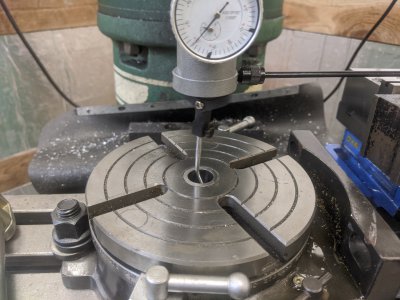
I used a .249 gauge pin in the spindle and used it to line up the rod. I ended up having to cut these clamp rods down since it was running into the spindle, which you'll see later (for you continuity fans: )).
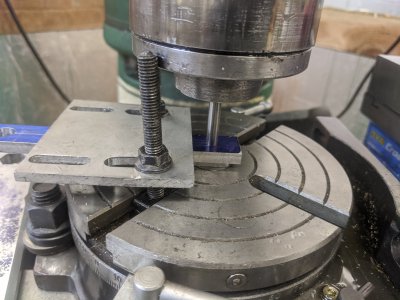
I slowly fed in the X axis while cutting with a 1/4" end mill, rotating the rotary table near constantly. I ended up doing how close to the center of the rod by eye based on some lines I'd drawn, but I think it turned out pretty even.
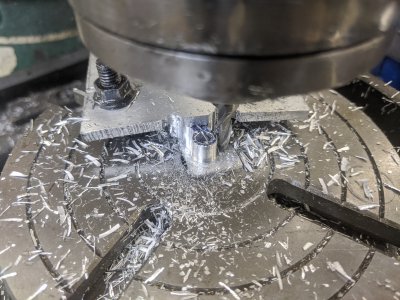
AND this is it for the day! I'm likely going to need to do a little more work on the rotary table on both sides, but my clamp plate was too close to the part to do that side in that setup. I haven't decided on the rest of my order-of-ops yet, but I might set the 'thickness' of the main rod FIRST, which means going right back to the rotary table.
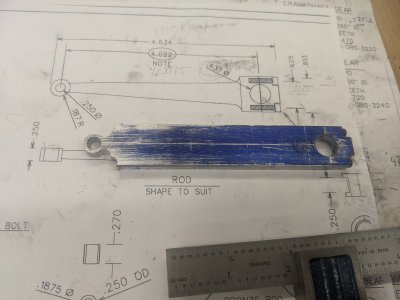
So thats it! Hopefully I'll have more time to work on Monday.














